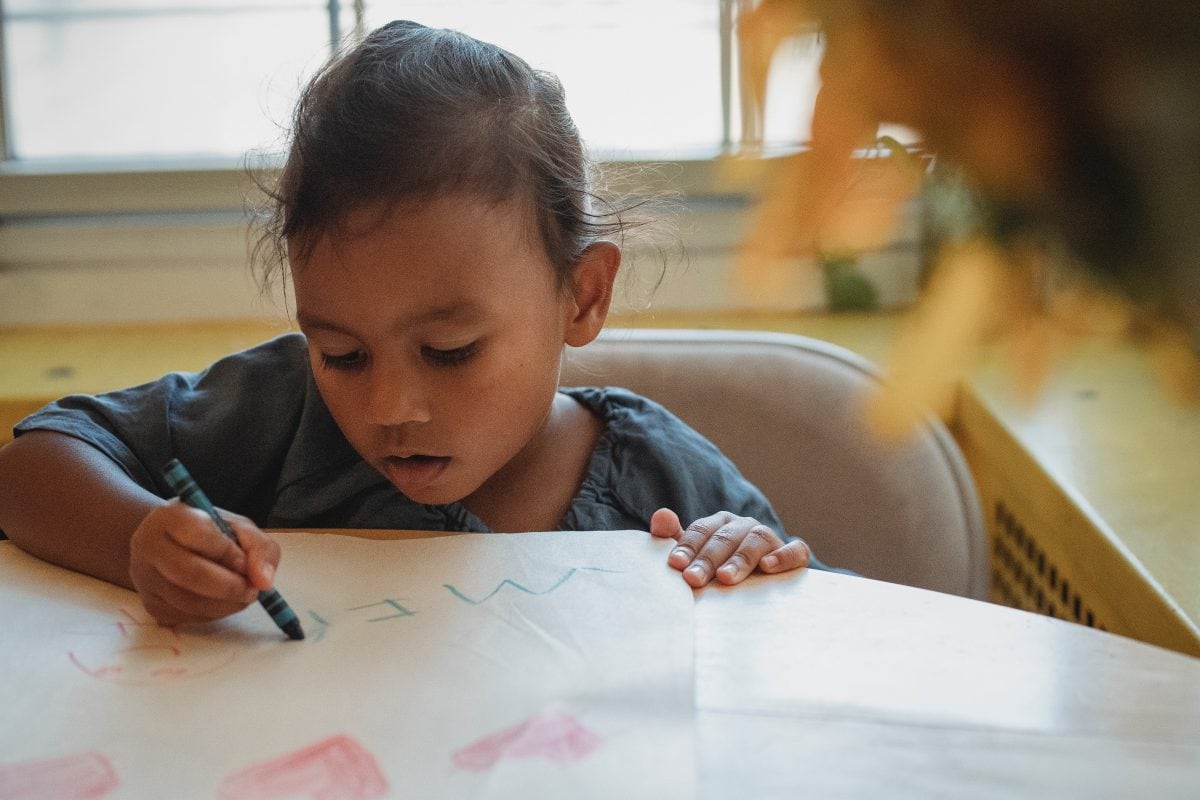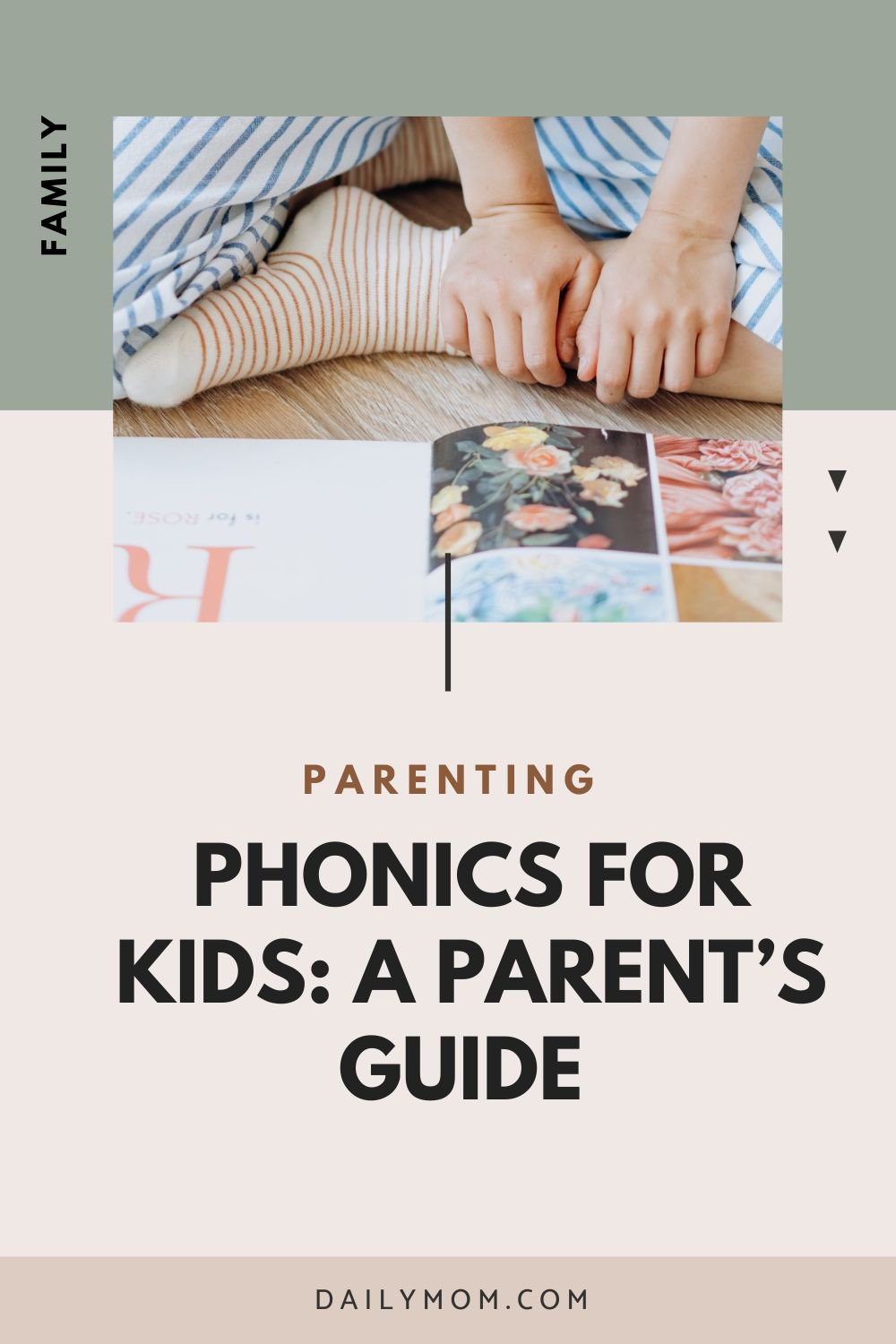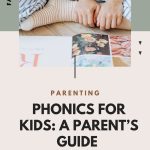Most parents agree that phonics for kids is the way to go. And while some school systems have shifted to a direct-instruction, phonics-based approach, many haven’t. Even if your child’s school system does teach reading with phonics, maybe you want to give your child a head start. And if your first grader is struggling with reading in school, you’re definitely on high alert, wondering what to do.
For any number of reasons, you might be wondering if you should teach your child to read at home—using phonics.
But then your inner dialog says something like this: Okay, so I’m going to teach my child how to read with phonics. Now what? Do I just start pointing out letters, words, and sentences? I know there’s this whole sounding-out thing, but I have no idea how to do it. I don’t even remember phonics!
You might even reach the conclusion that teaching reading is too complicated to do at home.
But it isn’t.
Not with phonics, anyway.
The beauty of phonics for kids is that it’s the easiest way to teach a child to read. Because phonics is taught in a linear, sequential fashion, you can break it down into bite-size pieces, working your way through the process until your child becomes an independent reader. You’ll always know where you are and what the next step is going to be.
If children as young as three can learn phonics, you can certainly learn how to teach it!
Phonics for Kids: Your 6-Step Guide
Phonics is a fundamental approach to teaching children how to read by connecting sounds with letters and spelling patterns. It’s foundational to early literacy skills, providing children with the tools they need to decode words and become confident readers.
The following six steps will help you get started on your phonics journey!
Phonics for Kids Step 1: Phonemic Awareness
Phonemic awareness is the foundation upon which phonics for kids is built. It involves the ability to hear and manipulate individual sounds (phonemes) within words. Before children can associate letters with sounds, they need to recognize and work with the sounds through the spoken word.
Suggested activities for developing phonemic awareness include:
- RHYMING GAMES: Encourage children to identify words that rhyme, like “cat” and “hat.”
- SOUND RECOGNITION: Ask children to clap when they hear the sound of a particular letter in a song.
- MOVEMENT: Make up a sentence with words in it that begin with a particular letter—or use the ones you already know, like Sally sells seashells by the seashore. Ask your child to repeat it and act it out. (They love this.)
- SOUND ISOLATION: Focus on specific sounds in words, like finding the /s/ sound in “snake.”
Phonics for Kids Step 2: Letter-Sound Correspondence
Once children have a solid grasp of phonemic awareness, it’s time to introduce them to the connection between letters and sounds. Phonics for kids involves teaching the correspondence between each letter or letter combination and its associated sound(s).
Pro Tip: If you aren’t quite sure how to pronounce the sounds, find a phonics program with an audio guide or ask your child’s teacher to help you with this. The correct pronunciation of the sounds of each letter is critical.
READ MORE: 11 Of The Best Kids Learning Apps

Here are some strategies for teaching letter-sound correspondence:
- PHONICS CHARTS: Make a chart with the letters of the alphabet and a picture next to each that begins with the letter.
Pro-tip: Skip the capital letters for now.
- FLASHCARDS: Create flashcards with letters on one side and images representing words that begin with each letter on the other.
Pro-tip: Never refer to letters by their names—only by their sounds. Instead of calling the letter ‘b’ a ‘bee,’ call it a ‘buh.’
- PHONICS GAMES: Make up games that involve matching letters to their sounds.
- WORD FAMILIES: Explore word families (e.g., -at, -an) to show how changing one letter can create new words.
Phonics for Kids Step 3: Blending Sounds
Now that your child is familiar with individual letter sounds, it’s time to practice blending the sounds together to make words. This is where the ability to learn how to decode a word comes in. Phonics for kids is actually fun; children love codes! Start helping them decode words they see on street signs, menus, and on TV.
And by the way, in case you didn’t notice, once your child can blend sounds together to make a word, they’re actually reading. Most kids will reach this milestone pretty quickly after you start teaching them phonics.
Effective strategies for teaching blending include:
- USE CVC WORDS: Start with simple Consonant-Vowel-Consonant (CVC) words—like “cat” and “dog”—that are easy to blend.
- SOUND-IT-OUT READING: Encourage children to read by sounding out each letter and then blend the letters together into a word.
Pro-tip: If your child has trouble with this step, try singing the words, which helps the separate sounds blend more smoothly.
- SENTENCE BUILDING: Progress to building simple sentences using the words they’ve learned.
READ MORE: From Coding to Cooking: How These 5 Online Learning Platforms Help Busy Moms Master It All

Pro-tip: Create your own storybooks with markers or crayons, since most books you’ll find to purchase have more complex words than your brand-new reader will be able to sound out. Let your child draw the pictures!
Phonics for Kids Step 4: Sight Words
While phonics is an essential tool for reading, not all words can be sounded out phonetically. These words are best learned through memorization. This is an important step, as they often appear frequently in texts and are crucial for comprehension.
Tips for teaching sight words include:
- WORD LISTS: Provide lists of high-frequency sight words, such as “the,” “and,” “is,” and “to.”
- FLASH CARDS: Create flashcards for sight words and practice recognition regularly.
- GAMES: Make learning fun with games like sight word bingo or memory.
Pro-tip: Don’t include words your child can sound out. Once your child has developed the ‘sounding out’ muscle, you don’t want to lose it!
- INCORPORATE SIGHT WORDS IN SENTENCES: Use sight words within sentences to show their practical application.
Phonics for Kids Step 5: Decoding Multisyllabic Words
As children progress in their phonics journey, they’ll encounter longer and more complex words. Decoding multisyllabic words is a natural extension of phonics for kids.
Strategies for tackling multisyllabic words include:
- CHUNKING: Teach children to break longer words into smaller, manageable chunks or syllables.
- ONE-AT-A-TIME: Hide one syllable with your hand or a post-it-note and have your child read the remaining syllable. Then hide the first syllable and repeat. Once your child can read each syllable separately, ask them to put the two together to read the whole word.
- PRACTICE WITH LONGER TEXTS: Introduce longer texts that contain multisyllabic words to build confidence. At this point, you can shop for literally hundreds of books your child will be able to read.
Phonics for Kids Step 6: Reading Fluency and Comprehension
The final step in teaching children to read with phonics is the development of reading fluency and comprehension. Fluency involves reading smoothly and with expression, while comprehension involves understanding the meaning of the text.
Effective strategies for enhancing reading fluency and comprehension include:
- READ ALOUD: Continue reading aloud to children to model fluent reading.
Pro-tip: Stop reading at the juicy parts, to be continued tomorrow. Your child won’t be able to resist picking the book up to find out what happens!
- SILENT READING: Encourage independent silent reading to build fluency.
Pro-tip: Create a cozy book nook that invites your child to settle in and stay a while.
- DISCUSSION: Talk about the stories! By doing this, you will be able to determine how well your child is understanding what they’re reading. No need to turn it into a test—just a fun little chat between the two of you.
In Summary, Phonics for Kids is Easy
Phonics for kids is a proven method for teaching children to read. Easy, too! By following the six essential steps in this guide—phonemic awareness, letter-sound correspondence, blending sounds, sight words, decoding multisyllabic words, and building reading fluency and comprehension—you can give your child the tools they need to become confident and proficient readers.
But don’t rush it! Remember, every child learns at their own pace, so be patient and provide plenty of opportunities for practice. Phonics for kids is not just about learning to read; it’s about opening up a world of knowledge, opportunity, and imagination. Let your child take all the time they need to learn this precious skill.
Want to Read More?
10 Tips For Developing Learning Strategies Over the Summer to Reduce the “Summer Slide”
CONNECT WITH DAILY MOM
💖 NEWSLETTER: DAILY READS IN YOUR INBOX 💖
Sign up to receive our picks for the best things to do, see and buy so you can relax and focus on more important tasks! Let us help you be the best version of yourself you can be!
BE SOCIAL WITH US
📌 LOVE IT? PIN IT!📌
Photo Credits: Pexels, Unsplash












































